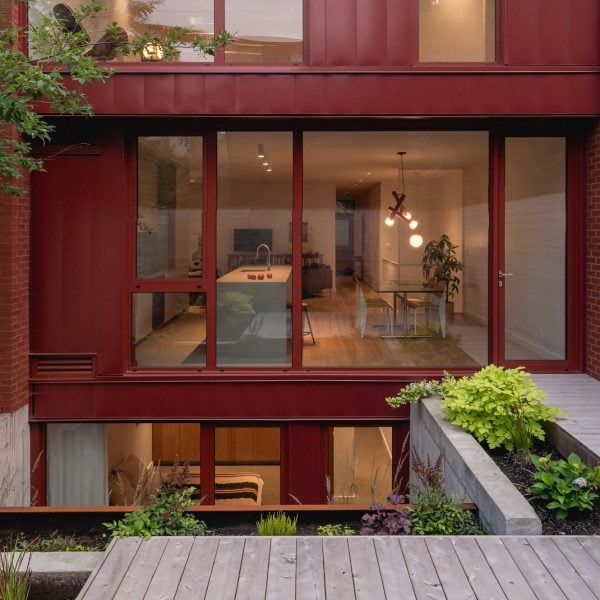Deep red accents and a redbrick facade define the renovation and extension of this duplex in Montreal, which has been completed by local architecture studio Naturehumaine.
Named Le Petit Merlot after its red palette, the project involved the expansion of a 1920s building containing two apartments located in the city’s Plateau Mont-Royal district.
Naturehumaine looked to maintain and reference the heritage character, reinstating its original redbrick street front and creating a more contemporary glazed facade overlooking the rear garden, framed in red steelwork.
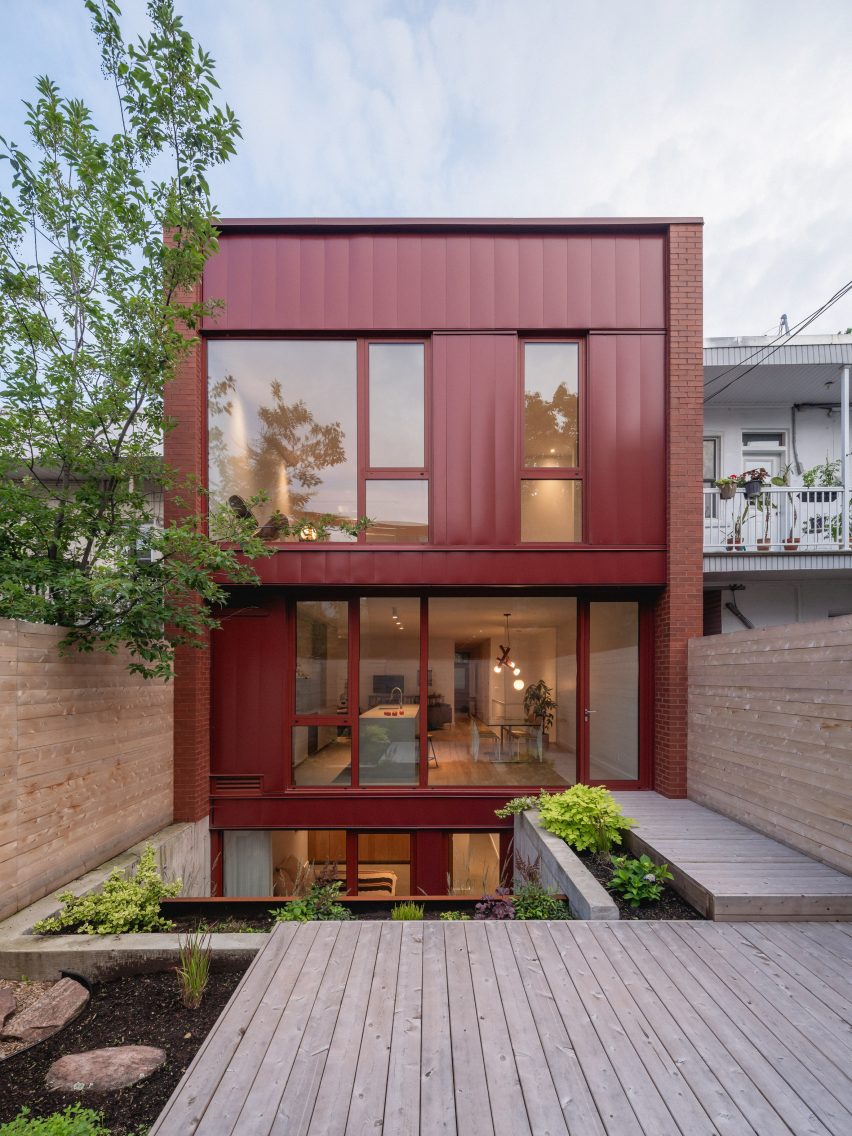
“Ultimately, Le Petit Merlot is intended to be a project on the scale of its neighbourhood which is inspired by the specific particularities of its neighbourhood,” explained the studio.
“Unlike the heritage character of the front facade marked by limited fenestration, the rear facade is worked in transparency on four levels.”
“The visual homogeneity of the project is ensured by shades of red. The theme of this colour is present both in the choice of brick, window mullions, parapet flashings, painting of hemlock lintels and painted steel wall covering,” it continued.
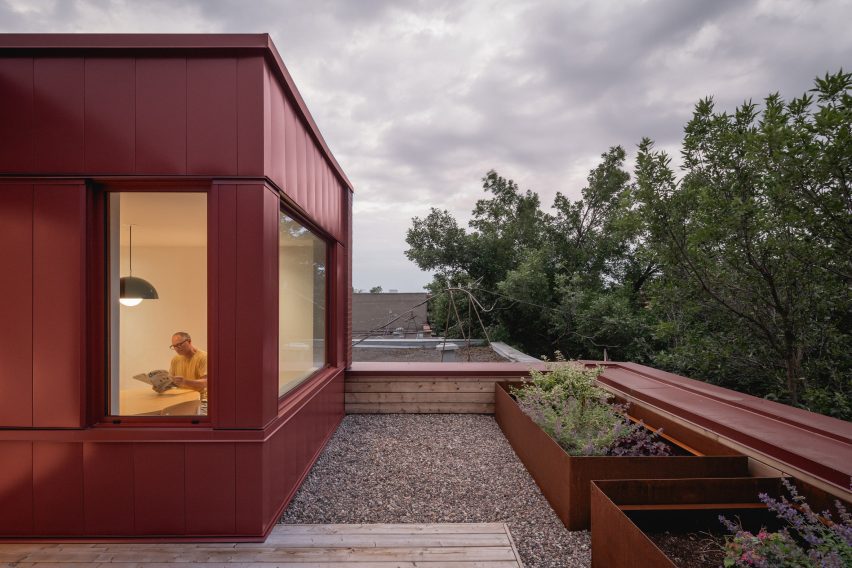
The lower unit of the duplex, which occupies the basement and ground floor level, was designed to enjoy a close connection to the garden, with the main bedroom and office overlooking a sunken gravel patio with a stepped, weathered steel planter.
Above, the ground floor contains an additional bedroom and large living, dining and kitchen space with access out onto a decked wooden patio at the end of the garden.
“In order to improve the spatial quality of the lower accommodation and to eliminate the effect of being embedded in the ground, a recess allows for floor-to-ceiling glazing in the bedroom and office,” described the studio.
Due to height restrictions in the area, the upper apartment has been extended through the introduction of a mezzanine level, containing a kitchen and dining area that opens onto a rooftop terrace.
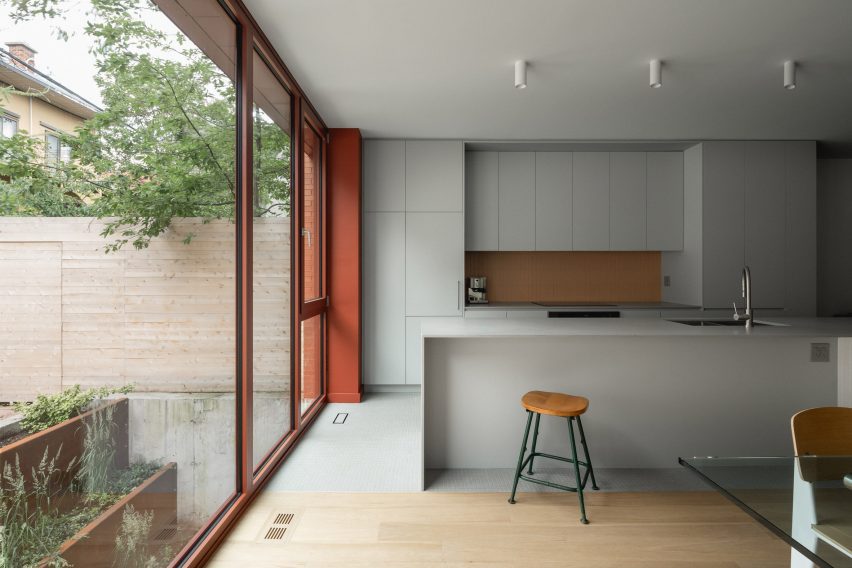
The reddy-brown tones of the exterior have been carried through to the interiors in window frames, light fittings and a deep “library” reveal with built-in shelving in the upper apartment.
A contrast with these elements is emphasised through the use of pale wood floors and carpentry and white walls throughout the rest of the interiors.
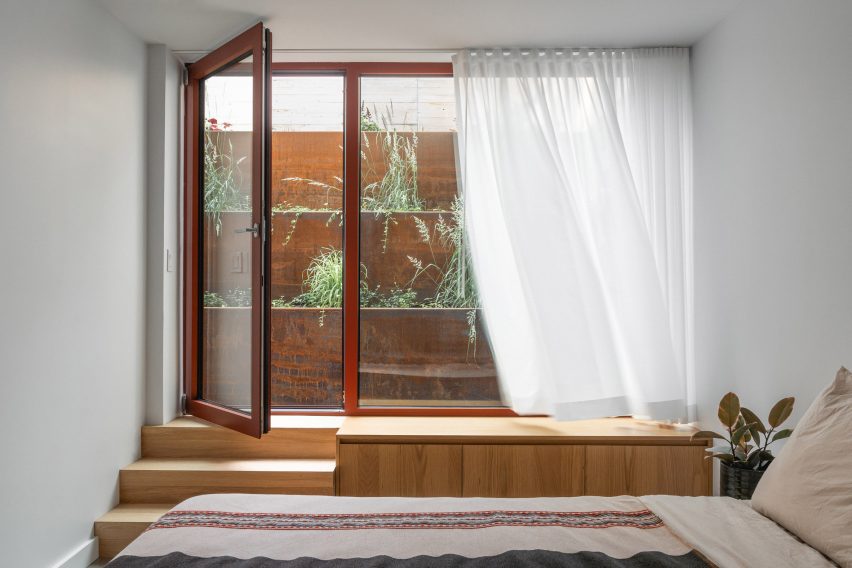
Naturehumaine was founded in Montreal in 2004 by Stephane Rasselet and Marc-André Plasse.
Previous projects by the studio include a “micro chalet” raised on stilts above a woodland in Québec, and a redbrick housing block in Montreal that draws on the area’s 1930s architecture.
Several other studios have carried out recent renovations of Montreal’s heritage housing stock, such as projects by Diandra Maselli and Atelier L’Abri.
The photography is by Raphaël Thibodeau.

